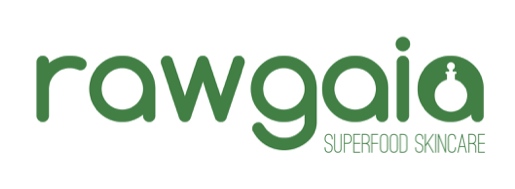9 EDIBLE FLOWERS AND THEIR INCREDIBLE HEALTH BENEFITS

By Our Guest Contributor; Sarah Smith
Today, people are becoming more conscious of the food they put into their bodies. While we often embrace fresh and organic foods, we may be overlooking one key source of food and health benefits: edible flowers. Yes, certain flowers can do more than decorate the landscape, garnish our plates, and add a pop of colour to our homes. Edible flowers can add colour, texture, flavour, and nutrition to our food while providing us with some incredible health benefits.
Feverfew
This edible flower which is part of the chrysanthemum family and resembles a small daisy is often dried to create healing herbal teas. We often see it paired with mint and rosemary and is used to primarily relieve migraines and muscle tension.
Dandelions
This prolific backyard bloom is a diuretic and able to relieve inflammation. When properly prepared, they can treat appetite loss, stomach issues, gas, gallstones, pain in the joints, eczema, and even constipation. While you can eat dandelion flowers raw on their own, they are often bitter. Toss them in with some salad greens or soups. You can also use dandelions to make beneficial wines or teas.
Pansies
Pansies have antimicrobial properties which mean they can help with a myriad of issues that affect our health. These can range anywhere from arthritis, skin problems, asthma, high blood pressure, and even epilepsy. Pick a few pansies to add to your salad and use their sweet flavour with mild grass undertones for a healthy boost.
Lavender
When added or baked into food, lavender can add hints of sweet and savory to many dishes. Lavender can provide you with vitamin A which is important to eye health and keeping our skin healthy. Lavender also contains calcium and iron which are important nutrients our bodies require. Eating lavender can ward off osteoporosis and even aid in reducing the symptoms of PMS. It has even been suggested by experts that consuming lavender may aid with controlling anxiety and depression due to its natural relaxing properties.
Coriander
Coriander flowers and leaves are loaded with antioxidants and micronutrients. When the flowers and leaves are consumed, it helps keep blood sugar levels in check. This little flower also contains fiber, minerals, and vitamins like K. Vitamin K aids in blood clotting and heart protection. While known to have a strong herbal taste, coriander flowers have been known to have a cooling effect on spicy foods.
Chamomile
This small daisy-like flower which faintly smells like apples has been used for centuries as a natural remedy. Often, it is dried and steeped to make tea that is loaded with antioxidants and calming properties. This tiny flower may be able to lower risks of heart disease and cancer while aiding in digestion and sleep.
Mint
Mint flowers and leaves provide a fresh zing of flavor to vegetables, fruit salads, desserts, and even sauces. This common herb is known for aiding digestion and soothing stomach ailments.
Rose
Surprisingly, rose petals have a delicious flavour that can enhance a variety of drinks and fruit dishes. Besides being rich in vitamins and antioxidants, this popular edible flower has some pretty incredible health benefits that combat indigestion, constipation, urinary problems, stress, headaches, and arthritis.
Yucca
There are more than 40 species of this hardy perennial, but it’s the white flower petals that standout. They provide a sweet artichoke flavour that is perfect for salad seasoning. Besides flavour, these edible flowers boost our immune systems, improve heart health, aid digestion, reduce cholesterol levels, ease arthritis, and so much more.

Just a Few Precautions...
However, before digging into the amazing world of edible flowers and their incredible health benefits, there are some precautions we need to consider. As with most food foraging, it’s wise to only eat flowers that you are positive are safe and non toxic. For example, foxglove, potato, and sweet pea flowers are toxic. If you are in doubt, avoid them. It’s always better to be safe than sorry.
Listed below is a short rundown of tips for safely eating flowers:
- Reference a reliable source or book on edible flowers before ingesting anything.
- Grow your own edible flowers so you can control what products are used to treat the plants.
- Never pick flowers from public areas, because they probably have been treated with herbicides or pesticides.
- Always wash any flower before eating.
- Only eat the petals of an edible flower unless you have verified the rest of the plant is safe to eat.
- Eat small amounts at first to avoid any allergic reactions or unpleasant side effects. If you react positively, slowly increase the amounts if desired.
- Purchase edible flowers from trustworthy stores and sites to ensure they are safe and high quality.
What are your favorite edible flowers?
References:
https://www.vogue.com/article/health-benefits-edible-flowers-harvest-book-stefani-bittner-alethea-harampolis
http://www.mariefranceasia.com/health/natural-healing/alternative-medicine/edible-flowers-health-benefits-194122.html
https://spoonuniversity.com/lifestyle/4-edible-flowers-you-should-be-eating-for-health-reasons
https://www.livestrong.com/article/500806-what-are-the-benefits-of-eating-lavender/
https://www.healthline.com/nutrition/5-benefits-of-chamomile-tea
https://www.organicfacts.net/yucca.html
http://www.thehealthsite.com/diseases-conditions/do-you-discard-coriander-flowers-stop-now-bs0716/
https://www.kremp.com/comprehensive-guide-to-edible-flowers-articles
http://www.mariefranceasia.com/health/natural-healing/alternative-medicine/edible-flowers-health-benefits-194122.html#item=1
http://www.sustainablebabysteps.com/edible-flowers-list.html
http://www.ilovenature.world/mindful-living/2017/7/21/10-edible-flowers-with-healing-benefits
Next →
← Previous







Nesstate Flora
March 06, 2019
Thanks for sharing